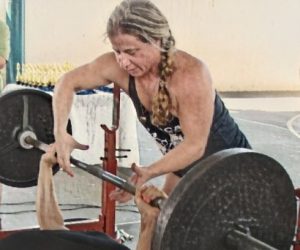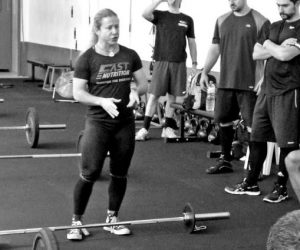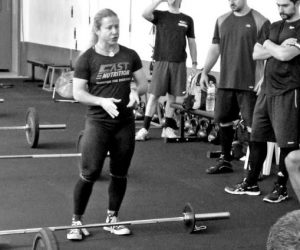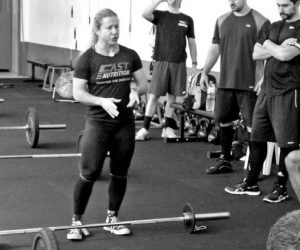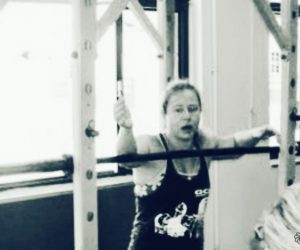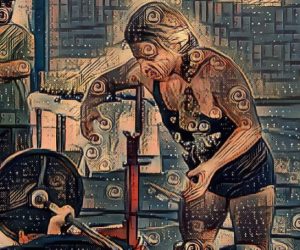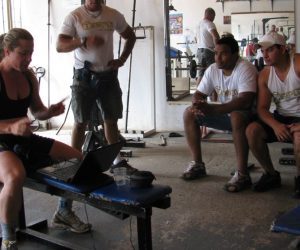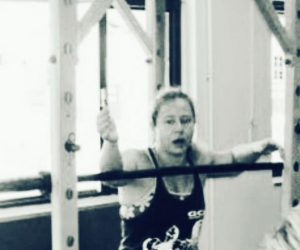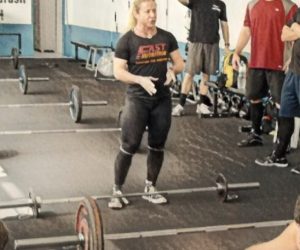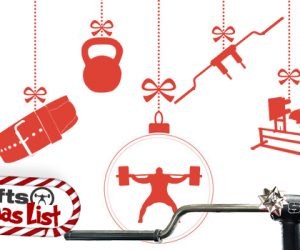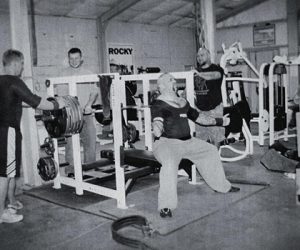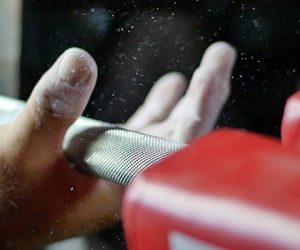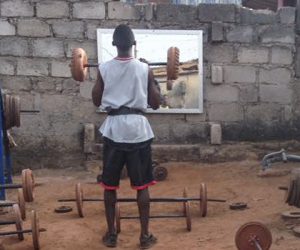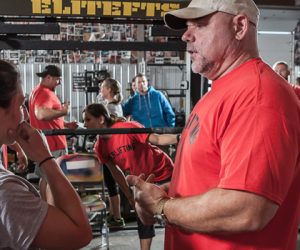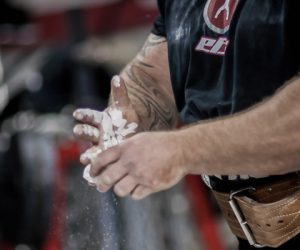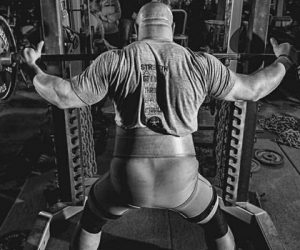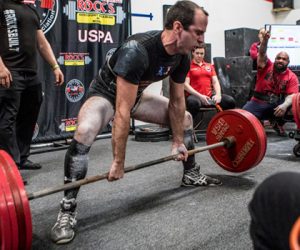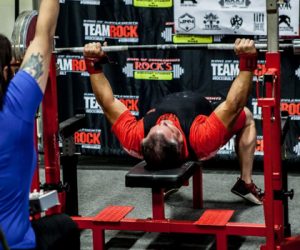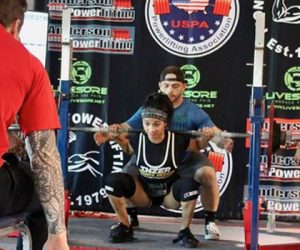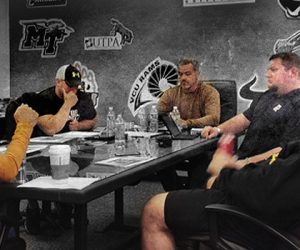How Research Can Help You Manage Detraining and Retraining
Both are scary to endure, but as an athlete, it's part of the game. A little bit of knowledge can go a long way in managing this kind of stress.
Managing intensity under uncertainty with a two-option system: Brian’s s...
Brian in a surgeon and his schedule is intense, frequently unpredictable and there are periods of important sleep deficits.
Can you do my meal plan? NO
Prescribing a diet, for me, is as unethical and should be as illegal as prescribing pharmacological or physical-therapy treatment.
Kinesiophobia: when your boys and girls are scared of a movement that hu...
If you are an athlete, first, don’t be ashamed if you feel scared to resume the movement where you got hurt and don’t underestimate the “mental barrier”.
If you are a coach, all I can say is that sooner or later it will happen to one of your boys and girls.
Brainstorm: Changing Perspectives on Human Strength — Human Grip
Today I’m going to address one line of scientific inquiry that has a direct impact on our current understanding of human strength: the changing view of the human grip.
A delicate subject: coaching elite athletes and the possible tension bet...
I am grateful for the athletes that prove my friends wrong, that show that athletes can be honorable, socially responsible and care about bigger things.
Coaching the “yes but” people – it’s impossible
My advice: identify it early and cut the conversation short. You can’t coach them.
Coaching, teaching and teaching coaches – part 5: grip training
As in the odd objects course, I created stations according to movement type: squeezing, pinching, static holds, finger extension, and forearm.
Coaching, teaching and teaching coaches – part 4: adding odd objects
The course helped coaches introduce certain drills into their athletes’ strength routines with proper technique and knowledge about the foundations.
Coaching, teaching and teaching coaches – part 3: how the strength progr...
Teaching these courses made me a much better coach. A much more flexible, cautious and observant coach.
Brainstorm: Was "Back in the day" Really That Good?
If so, were the early-day strength athletes stronger, faster, and more powerful than present-day competitors? Studies about nostalgia suggest the answers to these questions root in nostalgic accounts from both positive and negative emotions.
Coaching, teaching and teaching coaches – part 2: the five-lifts course
Joel Fridman and I played with several models and arrangements for the 5-lift course. Our chief goal was to, at the same time, break strength into its multiple manifestations and their physiological differences, and introduce an integrated approach to it.
Coaching, teaching and teaching coaches – part 1: the five-lifts course
It is exhausting. It is also the best way to learn how to coach: you have to handle the same challenge, and each student is a different teaching/coaching challenge, for 20 hours. There’s a lot I would never have learned without this experience.
The independent strength (and conditioning?) coach: practice ground and ...
. There’s more to learn in one day in any of these places than in a lifetime as a personal trainer for shape, beauty or even strength for strength’s sake
Talent, “movement for all” and the coach
Over-emphasizing talent and dividing people into those who have and are, therefore, allowed into the playground of sport, and those who haven’t and are excluded is wrong at the school level, at the “generic” gym level and only right at elite competitive sport level.
How Stuff Works: The Knee Sleeve
Beyond the notorious odor knee sleeves omit when soaked with sweat and stored in your gym bag for days on end, what don't you know about them? Four parts in this personal equipment series, let's find out.
The coach as an anthropologist of unknown cultures
Certain individuals, however, deviate from their environment’s mainstream body culture and create a symbolic cocoon for themselves. They embody their own unique movement culture and we, as coaches, must observe and interpret that culture if we are asked in.
Being a disciple, being a coach: dedicated time, commitment, rituals and...
That is why charlatanism and the certification craze in the fitness industry causes disgust in actual coaches and scholars: it is a violation of an ethos we live by.
“Coach, I came up with a cold: should I change the intensity of today’s ...
What the athlete should NOT do is “push through” infection or a sign that a major musculoskeletal injury is probable.
When the skill doesn’t stick or is lost: two stories and their strategie...
Understanding the foundations of motor skill learning allows the coach to create a strategy tailored to that specific athlete.
Coach: teacher, friend, mentor or the “more experienced other” (in memor...
Because all I needed to learn about life has nothing to do with gym or school. All I needed to learn about life and about how to live with my dark passenger I learned from Master and from my parents, who are also teachers
Coach: teacher, friend, mentor or the “more experienced other” (in memor...
A teacher needs to have a set of skills to accomplish the most significant of jobs: to provide tools for the young to build their life projects. Their future.
Imaginary deficiencies and issues: the “deficient piriformis” (Mark’s st...
. I win, though: I had an athlete with an imaginary “unresponsive piriformis”.
The atypical training conditions epilogue: tapering for competition (Dav...
Although I worked with Dave for years, the program I am writing about here is 14 weeks long. The last 4 weeks are the tapering cycle before the meet:
How Stuff Works: The Knee Wrap
Beyond the heated debates, love and hate, blood and tears, that constrict knee wraps, exactly how do they work? Let's take a look at the basics, different types, knee wrapping techniques, a 197-response survey to see how athletes use them, and more.
Two facilities, two training strategies and getting there (Dave’s story)
Long story short: Dave was a martial arts and strength coach who wanted to make his comeback in competitive powerlifting and asked me to design a program for him
Two facilities, two training strategies and one goal (Dave’s story)
People come to us in all shapes and forms and an infinite combination of weirdness when it comes to available time, available equipment and goals. It’s our job to make it work.
Managing awkward facility access, time availability and injury: Dave’s s...
Dave asked me to design a program for him as a "comeback" to lifting and he planned to participate in a small full power meet just to have a timed goal and measurable results.
After recovery from overtraining: “real thing training”
After the three months of overtraining syndrome (OTS) recovery, Sean was ready for a challenge. The championship was in November and we started the new strategy in June. Five months and change to prepare.
How Stuff Works: The Wrist Wrap
With a better understanding of belts (the first product studied within this series), it's now time we'll move on to wrist wraps. Exactly how do wrist wraps work? Also, a big thanks to the 262 athletes who gave their input in an interesting survey about their use of wrist wraps.
Recovery from overtraining syndrome – final week in three months
I have been sharing Sean’s journey out of overtraining syndrome (OTS) since he started working with me, through what his program looked midway to his final recovery week (today).
Recovery from overtraining syndrome – one month later
The three-month strategy itself was designed according to certain choices about training session frequency, volume and intensity manipulation, monitoring and perceived exertion assessment.
Recovery from overtraining syndrome: Sean’s story
Here’s something unknown to lay people: overtraining syndromes are not one condition. They come in different forms and may not be that easy to diagnose or coach.
How Stuff Works: The Belt
If you are reading this, either you train/enjoy strength training or you like/manufacture personal equipment. In either case, I want to help you. As always, I am committed to causing as much damage as I can to shallow thinking and shortcuts to critical-thinking. This is how the belt works.
The End Game: Flow and Performance
At the core of extreme well-being is a state of consciousness and physical experience that has been called flow. In this final chapter of the "motivation" series, we'll define flow and have a better understanding of how it happens.
Goals and Performance: Concepts and Application
The housewife, the architect, and the fighter all live according to a long-term goal-oriented life-project. What is the difference? Who will choose to be the master of their fate and the captain of their soul?
The Plan: Walking the Talk
Exhaustion is the main reason I and lots of people quit following a plan. Another reason: catastrophic circumstances. Have you considered goal setting and time framing, monitoring, and journaling to follow your plan?
The Role of Self-Regulation and Control in Sport Performance
You must be in control or have autonomy, to set goals, move through intrinsic and extrinsic motivators, and grittily, hardily, toughly keep on track — especially if your choice is to be or continue being a successful high-performance athlete.
12 Gifts to Warm the Heart of Your Anti-Social Friend
There are many versions of such misanthropes around (with home gyms of their own), and while this list will make their days, months, and years, it will make any true appreciator of strength training happy.
The Role of Mental Toughness in Sport Performance
I decided to finish the series with what I consider to be the remaining badly misused concepts. The previous one was discipline, and now, the worst of all: mental toughness.
The Obese Body and Exercise — Physical Cross-Talk
The main reason I would suggest you engage in exercise is happiness. You might ask, “You mean managing depression?” No. I mean simple and plain happiness, although I’ll discuss depression and mental health, too.
The Obese Body and Exercise
What I try to offer here is information to both coaches and obese people about why and how to exercise — different reasons than the conventional assumption concerning weight loss — considering some of the difficulties inherent in the condition.
Intimidation and the Fitness Industry
In this article, I will offer definitions and a technical approach to the terms involved in this problem. With this, hopefully, I may help you understand the forms intimidation can take and turn your dream gym into a nightmare.
New Gym in the Neighborhood
I invite you to consider simple choices for space arrangement, staff training, and customer service to help you shape your gym for your chosen demographic and make a difference.
Supermen: Cross-Athleticism, Who These Guys Are, and How They Ended Up T...
Certain sports are based on cross-athleticism and the mastery of more than one set of skills, such as the triathlon, the decathlon, strongman, Highland games, and now Crossfit Games. But do you get better at one by being better at another?
Africa Lifts
These are the gyms of Sub-Saharan Africa, where the training environment is unsheltered and un-floored and the equipment is made of scrap iron, car parts, cement, and anything else that works.
The Barbell: What It Is and How to Take Good Care of Yours
Good, quality bars are a component of good, quality training. More so than with other pieces of equipment in a gym, lifters tend to develop a personal (sometimes quite emotional) relationship with bars.
Take 10-Question Survey That'll Help Athletes
The results will be used to produce different educational materials to help the sports community make informed decisions concerning PEDs. This should only take a few minutes. Thank you.
Sexual Violence and the Coach-Athlete Relationship
The goal of this article is to provide tools to understand, prevent, and act on the problems of sexual violence, with a focus on the coach-athlete interaction.
2018: We Change, Goals Change, But the Mystery of Strength Remains
A person's relationship with strength training and strength sports is dynamic and changes through time. I'm going to share with you some of my adventures that culminated in 2017 and offer a few tools that may be useful to you.
The Squat Rack: The Heart of the Weight Room
In this article I will give you a glimpse of the many variations of the squat rack, its use, and its customization, as done by elitefts.
From the Judge’s Chair: The Deadlift
Now that this series has covered the insight of a powerlifting judge for the squat and the bench press, we move to discuss the knowledge we can gain regarding the final lift of the meet: the deadlift.
From the Judge’s Chair: The Bench Press
In the first article of this series, I explained the value of the judge's perspective in relation to the squat. Now let's look at the bench press and see what lifters can learn from considering the judge's role.
From the Judge’s Chair: The Squat
Nothing trumps experience — specifically the sheer number of lifts you watch and analyze. Who sees the largest number of lifts? That's right: the judge.
Empowering Intellectuals: Reclaiming the Body — Muscularity, Bone Densit...
In part one I addressed some general definitions and discussed the issues of age group, level of activity, previous training experience, and body fat. Now we address muscularity, injuries, bone density, and the lifestyle factors that impact your health.
Empowering Intellectuals: Reclaiming the Body
It is a challenge amongst intellectuals to talk about the human body in ways that won't immediately elicit an ideological defensive reaction. But we can try.
Muffled Pain — Athletes, The Opioid Epidemic, and Painkiller Paranoia
My purpose with this article is to use my involuntary position as a character in the story to explore the meaning of the opioid epidemic and its wider implications.
All Together Now — The Psychologist
Today we will look into sports psychology. While the coach and the nutritionist are pushed into multi and interdisciplinarity even when there is not a proper structure for it, the same doesn’t happen with the sports psychologist.
Page
- Page Previous
- Page 1
- You're currently reading page 2
- Page 3
- Page Next










